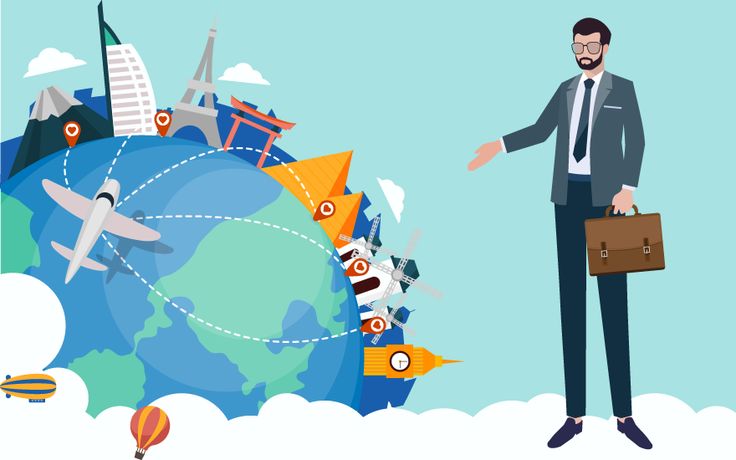The global tourism landscape is undergoing a transformative renaissance as the world steadily emerges from the grip of the COVID-19 pandemic. With widespread vaccination efforts bolstering traveler confidence and prompting governments to ease restrictions, the tourism sector is experiencing a significant rebound. In this extensive article, we explore the various facets behind this recovery—from the role of global immunization programs to innovative strategies adopted by industry stakeholders. We also examine the challenges that lie ahead and how technology is reshaping travel in a post-pandemic era.
The tourism industry, once severely disrupted by travel bans and lockdowns, is now witnessing a revival as the mass vaccination campaigns provide a pathway back to normalcy. Travel enthusiasts, businesses, and governments are all recognizing the vital importance of safe travel. The rollout of vaccines across continents has not only improved public health outcomes but has also instilled a renewed sense of optimism among travelers worldwide.
Prior to the pandemic, tourism contributed significantly to global economies, providing millions of jobs and generating substantial revenue. However, when COVID-19 spread across the globe, the resulting travel restrictions brought the industry to a near standstill. Now, as vaccines become more accessible and countries adopt health protocols, tourism is bouncing back with innovative solutions and renewed vigor.
The Impact of Global Vaccinations
The mass immunization programs have been a game-changer in restoring confidence in travel. Vaccinations have led to a dramatic decline in infection rates and severe illnesses, making international travel seem less risky. This section delves into how global vaccination efforts are catalyzing the recovery of tourism.
Rebuilding Traveler Confidence
Vaccinations have played a crucial role in rebuilding the trust of the public. As more people get vaccinated, travelers feel safer when venturing out to explore new destinations. This newfound confidence is supported by:
A. Reduced Health Risks: Vaccinated individuals are less likely to contract and transmit the virus, which lowers the overall risk during travel.
B. Government Endorsements: Many countries now require proof of vaccination, further reassuring travelers of the safety measures in place.
C. Improved Public Health Infrastructure: As healthcare systems adapt and prepare for new norms, the overall environment becomes more secure for visitors.
Easing of Travel Restrictions
In response to the successful rollout of vaccines, governments worldwide have relaxed stringent travel restrictions. International borders are gradually reopening, and quarantine measures are being redefined to accommodate the growing number of vaccinated travelers. Key factors in this easing process include:
A. Vaccine Passports: Digital or paper-based vaccine certifications are being used to streamline entry procedures at airports and border checkpoints.
B. Bilateral Agreements: Countries are establishing travel corridors or bubbles that allow for safe movement between regions with similar vaccination rates and low infection levels.
C. Flexible Policies: Many nations are adopting adaptable policies that can quickly respond to changing epidemiological conditions, ensuring that travel remains safe and viable.
Revival Strategies in the Tourism Sector
The resurgence of the tourism industry is not solely reliant on vaccinations; it is also propelled by a range of strategic initiatives from airlines, hotels, tour operators, and local governments. These stakeholders have had to rethink their business models and embrace innovation to stay relevant in a rapidly changing landscape.
Enhanced Safety and Health Protocols
Safety has become the paramount concern for travelers, prompting industry players to overhaul their operational practices. Hotels, airlines, and attractions are now incorporating rigorous health measures to ensure customer safety. These measures include:
A. Sanitization Procedures: Enhanced cleaning regimens and disinfection protocols are being implemented across all public and private spaces.
B. Social Distancing Policies: Redesigning seating arrangements, queues, and check-in processes to maintain a safe distance between individuals.
C. Contactless Services: Adoption of digital check-ins, mobile payments, and virtual concierge services to reduce physical interactions.
Adoption of Digital Technologies
The digital transformation within the tourism industry is accelerating. Technology is being used to create seamless, user-friendly experiences that cater to modern travelers’ demands for safety, efficiency, and convenience. Innovations include:
A. Virtual Tours and Online Bookings: Enhanced websites and mobile apps allow travelers to explore destinations virtually and make reservations without physical contact.
B. Digital Health Passes: The integration of health certificates into mobile apps provides a secure and verifiable way to confirm vaccination status.
C. Data Analytics: Leveraging big data to predict travel trends, optimize resource allocation, and personalize travel experiences for customers.
Flexible Booking and Cancellation Policies
To address the uncertainties associated with ongoing pandemic developments, many travel companies have revised their booking policies. These flexible options help mitigate risk for travelers while ensuring that businesses can manage cancellations without severe financial losses. Measures include:
A. Refundable Bookings: Offering fully refundable reservations to encourage hesitant travelers.
B. Rescheduling Options: Allowing customers to change travel dates without additional fees.
C. Travel Insurance Enhancements: Bundling travel insurance with policies that cover pandemic-related disruptions.
Economic Impacts of Tourism Recovery
The rebound of the tourism industry is having a ripple effect across global economies. As travel picks up, so does the demand for related services and infrastructure improvements. Here, we examine the economic benefits spurred by the tourism sector’s revival.
Job Creation and Economic Growth
The resurgence in tourism is revitalizing job markets that were decimated by the pandemic. From frontline workers in hotels and restaurants to digital professionals in travel tech startups, the recovery has a broad economic impact. Key benefits include:
A. Employment Opportunities: Reopening of hotels, airlines, and attractions is creating a multitude of jobs, both directly and indirectly.
B. Local Business Revitalization: Increased tourism translates into higher revenues for local businesses, including restaurants, souvenir shops, and cultural attractions.
C. Infrastructure Development: Government investments in transport, public safety, and digital infrastructure are boosting the overall economy.
Government Revenue and Fiscal Stability
Tourism is a significant source of revenue for many countries through taxes, fees, and service charges. As travel resumes, governments are experiencing improved fiscal conditions, enabling further investments in public services and infrastructure projects. Economic improvements are supported by:
A. Tax Collection: Increased tourist spending enhances tax revenues, which can be reinvested into public services.
B. Foreign Exchange Earnings: International tourism generates vital foreign exchange, stabilizing national currencies and boosting reserves.
C. Stimulus for Ancillary Industries: Growth in tourism stimulates other sectors such as retail, entertainment, and transportation, further solidifying economic recovery.
Regional Case Studies
Different regions around the world are experiencing varied levels of recovery based on their vaccination rollout, public health measures, and strategic initiatives. This section highlights how specific regions are capitalizing on global vaccinations to restore their tourism industries.
Europe: A Gradual Return to Normalcy
Europe has been at the forefront of both vaccination efforts and tourism recovery. Countries like France, Italy, and Spain—known for their rich cultural heritage—are seeing steady increases in tourist arrivals. European nations have implemented strict safety protocols and digital health verification systems that facilitate safe travel. Key regional developments include:
A. Cultural Tourism Revival: Museums, historical sites, and festivals are reopening with enhanced safety measures, drawing tourists back to Europe’s iconic landmarks.
B. Inter-Country Travel Corridors: The European Union has promoted travel corridors that allow seamless movement between member states with similar health standards.
C. Investment in Tourism Infrastructure: Significant public and private investments in upgrading transport and hospitality services have bolstered Europe’s appeal as a top destination.
Asia-Pacific: Rapid Adaptation and Innovation
In the Asia-Pacific region, countries like Japan, South Korea, and Thailand are leading the way in innovative travel solutions. These nations are leveraging technology and flexible policies to attract both domestic and international travelers. Highlights from the region include:
A. Tech-Driven Experiences: Use of advanced digital platforms for booking, virtual tours, and customer engagement are enhancing the travel experience.
B. Robust Health Measures: Implementation of stringent hygiene protocols and contactless technologies reassures visitors of their safety.
C. Diversification of Tourist Offerings: Beyond traditional attractions, destinations are promoting wellness tourism, eco-tourism, and rural escapes to meet diverse traveler preferences.
Americas: Diverse Recovery Strategies
North and South America exhibit diverse recovery strategies that reflect the unique cultural and economic landscapes of their regions. In North America, cities like New York and Los Angeles are witnessing a resurgence in business and leisure travel, while South American nations are capitalizing on their natural wonders and cultural heritage. Notable points include:
A. Dynamic Urban Tourism: Metropolises are leveraging digital transformation to improve visitor experiences through smart city initiatives.
B. Eco-Tourism Growth: South American countries are emphasizing sustainable tourism practices that highlight their rich biodiversity and natural landscapes.
C. Resilient Community Engagement: Local communities are increasingly involved in tourism planning, ensuring that growth benefits a broader spectrum of society.
Future Trends in Post-Pandemic Tourism
As the tourism industry recovers, several emerging trends are shaping its future. These trends not only reflect changes brought about by the pandemic but also signal long-term shifts in consumer behavior and technological integration.
Personalization and Experiential Travel
Travelers today are seeking experiences that are both personalized and immersive. The post-pandemic era is characterized by a desire for meaningful travel that connects with local cultures and traditions. Trends in this space include:
A. Customized Itineraries: Use of data analytics to tailor travel experiences based on individual preferences and past behavior.
B. Local Immersion: A growing trend towards engaging with local communities and exploring off-the-beaten-path destinations.
C. Experiential Offerings: Emphasis on unique experiences such as culinary tours, adventure travel, and cultural workshops that create lasting memories.
Sustainable and Responsible Tourism
Environmental sustainability has become a central theme in the recovery of the tourism industry. Travelers are increasingly aware of their environmental impact and are seeking destinations that prioritize green practices. Key areas of development include:
A. Eco-Friendly Accommodations: Hotels and resorts that adopt sustainable practices, from energy efficiency to waste reduction.
B. Carbon Offsetting: Initiatives that allow travelers to offset their carbon footprint through contributions to environmental projects.
C. Community-Based Tourism: Programs that ensure tourism development benefits local communities while preserving cultural and natural resources.

Integration of Advanced Technologies
The continued adoption of advanced technologies is revolutionizing every aspect of travel. Digital innovations are making travel safer, more convenient, and more engaging. Areas of technological integration include:
A. Artificial Intelligence (AI): AI-powered chatbots and recommendation systems are personalizing the travel planning process.
B. Virtual and Augmented Reality: These technologies offer immersive previews of destinations, helping travelers make informed decisions.
C. Blockchain for Security: Blockchain technology is being explored for secure transactions and to streamline the verification of travel documents.
Health and Wellness Tourism
The pandemic has shifted focus towards health and wellness, prompting travelers to seek destinations that promote physical and mental well-being. Developments in this sector include:
A. Wellness Retreats: Resorts and destinations dedicated to wellness, offering services such as meditation, yoga, and spa treatments.
B. Medical Tourism: Countries with advanced healthcare facilities are attracting international visitors for elective procedures and treatments.
C. Preventive Health Programs: Integration of preventive healthcare measures into travel itineraries, including on-site health consultations and fitness activities.
Overcoming Challenges in the New Normal
Despite the optimistic recovery, the tourism industry faces several challenges that need to be addressed to ensure sustainable growth in the post-pandemic era.
Uncertainty Over New Variants
The emergence of new COVID-19 variants remains a critical concern. While vaccinations have provided significant protection, the possibility of breakthrough infections and vaccine-resistant strains could disrupt travel plans. Strategies to mitigate these risks include:
A. Ongoing Research and Surveillance: Continuous monitoring of virus mutations to update health protocols and vaccine formulations.
B. Adaptive Policy Frameworks: Governments and industry stakeholders must be ready to implement contingency measures if infection rates spike.
C. Public Communication: Transparent and timely communication with travelers about evolving risks and preventive measures is essential.
Vaccine Hesitancy and Access Issues
While global vaccination campaigns have made significant progress, vaccine hesitancy and uneven distribution continue to be challenges in some regions. Addressing these issues is crucial for ensuring a fully recovered tourism sector. Possible solutions include:
A. Educational Campaigns: Initiatives aimed at dispelling myths and providing clear, factual information about vaccine safety and efficacy.
B. Improved Distribution Networks: Strengthening global cooperation to ensure equitable vaccine access, especially in developing regions.
C. Incentive Programs: Encouraging vaccination through incentives for travelers, such as discounted travel packages or exclusive offers.
Economic and Regulatory Barriers
Tourism recovery also depends on the effective management of economic and regulatory challenges. Many regions still face financial constraints and bureaucratic hurdles that could slow down the pace of recovery. Mitigation strategies include:
A. Public-Private Partnerships: Collaborative funding models that share financial risks and benefits between governments and private investors.
B. Streamlined Regulations: Simplifying visa and travel regulations to facilitate easier cross-border movement.
C. Targeted Stimulus Packages: Government support in the form of grants, loans, or tax incentives specifically aimed at reviving the tourism sector.
The Role of Digital Marketing and SEO in Tourism Recovery
As the tourism industry rebuilds, digital marketing and search engine optimization (SEO) have become essential tools for reaching a global audience. Companies are leveraging digital channels to promote travel destinations, engage with prospective travelers, and boost online visibility. Effective digital strategies include:
A. Content Marketing: Creating informative and engaging content that highlights safety measures, local attractions, and unique travel experiences.
B. Social Media Engagement: Utilizing platforms like Instagram, Facebook, and Twitter to connect with audiences and share real-time updates.
C. Local SEO Optimization: Ensuring that travel-related businesses appear in local search results, thereby attracting nearby tourists and enhancing their online presence.
Adapting Business Models for a Resilient Future
The post-pandemic recovery is pushing tourism businesses to adopt flexible and resilient business models. These models not only focus on immediate recovery but also lay the groundwork for long-term sustainability. Key adaptations include:
A. Diversification of Offerings: Expanding services beyond traditional travel packages to include wellness programs, virtual experiences, and adventure tourism.
B. Dynamic Pricing Strategies: Implementing pricing models that reflect real-time demand and market conditions, allowing for better revenue management.
C. Investment in Technology: Prioritizing the adoption of digital tools and platforms that enhance customer engagement and operational efficiency.
Consumer Behavior Shifts and Market Adaptation
The pandemic has permanently altered consumer behavior in the travel industry. Modern travelers are more health-conscious, digitally savvy, and value-driven. Understanding these shifts is critical for businesses aiming to capture a larger share of the recovering market. Observations include:
A. Preference for Safety: Consumers now prioritize destinations and services that clearly communicate health and safety protocols.
B. Demand for Authenticity: There is a growing desire for unique, local experiences that offer deeper cultural engagement rather than generic tourist attractions.
C. Emphasis on Flexibility: The uncertainty of travel restrictions has led consumers to favor flexible booking and cancellation policies.
Government Initiatives and International Cooperation
Government actions continue to play an integral role in the recovery of the tourism sector. National and international policies are being redesigned to foster an environment that promotes safe travel and economic growth. Noteworthy initiatives include:
A. Health and Safety Certifications: Governments and international bodies are developing standardized certifications to ensure that tourism businesses comply with global safety standards.
B. Travel Corridors and Bilateral Agreements: Countries are forging agreements that enable hassle-free travel between nations with similar health protocols and vaccination rates.
C. Support Programs for Businesses: Financial aid, tax breaks, and subsidized loans are being offered to tourism operators to help them navigate the post-pandemic recovery.

The Road Ahead
While the progress made so far is promising, the tourism industry must remain vigilant and adaptive as it charts its course forward. The integration of digital technologies, the commitment to sustainable practices, and the continued focus on traveler safety will be critical in shaping a resilient future. Collaboration between governments, industry players, and local communities will be key to unlocking the full potential of tourism in a post-pandemic world.
Looking ahead, several emerging trends are expected to define the new era of travel:
A. Increased Personalization: With the growing use of data analytics, travelers can expect more customized experiences tailored to their preferences and past behavior.
B. Sustainable Practices: As environmental concerns become more pressing, eco-friendly travel options will gain traction, encouraging destinations to invest in sustainable tourism infrastructure.
C. Enhanced Digital Integration: The continued evolution of digital platforms and AI will further streamline the booking process, improve customer service, and facilitate real-time feedback loops between travelers and service providers.
Conclusion
The resurgence of the tourism industry amid global vaccinations represents a beacon of hope in challenging times. With robust immunization efforts reinvigorating traveler confidence and innovative strategies reshaping industry practices, the future of travel looks bright. While challenges remain—from new virus variants to evolving consumer expectations—the collective efforts of governments, businesses, and communities are paving the way for a resilient, thriving tourism sector.
This recovery is not merely about returning to pre-pandemic norms; it is about reimagining travel in a way that prioritizes safety, sustainability, and personalized experiences. As digital transformation continues to influence every aspect of the travel experience, the industry is poised to offer dynamic and engaging experiences that cater to the modern traveler. With each new vaccination, every flexible policy, and each technological advancement, the global tourism landscape moves closer to a future where travel is not only safe but also deeply enriching and economically beneficial for communities around the world.






